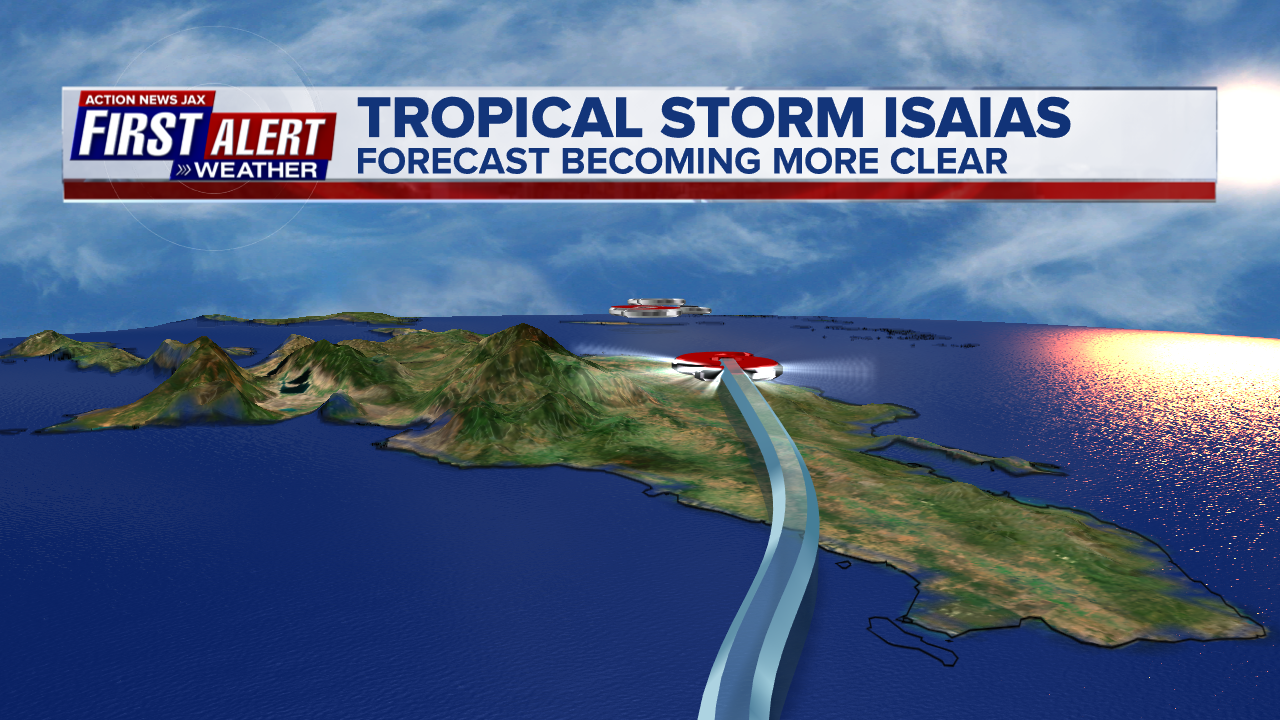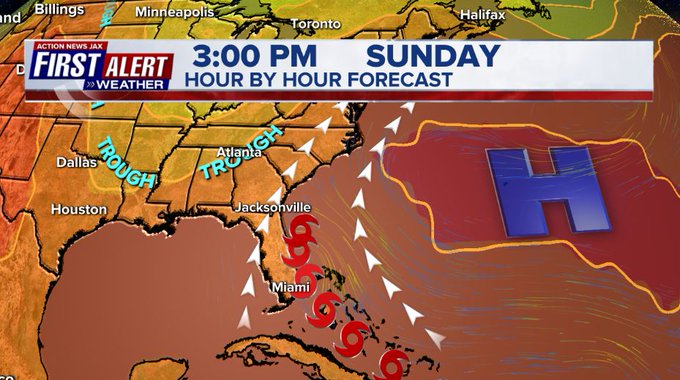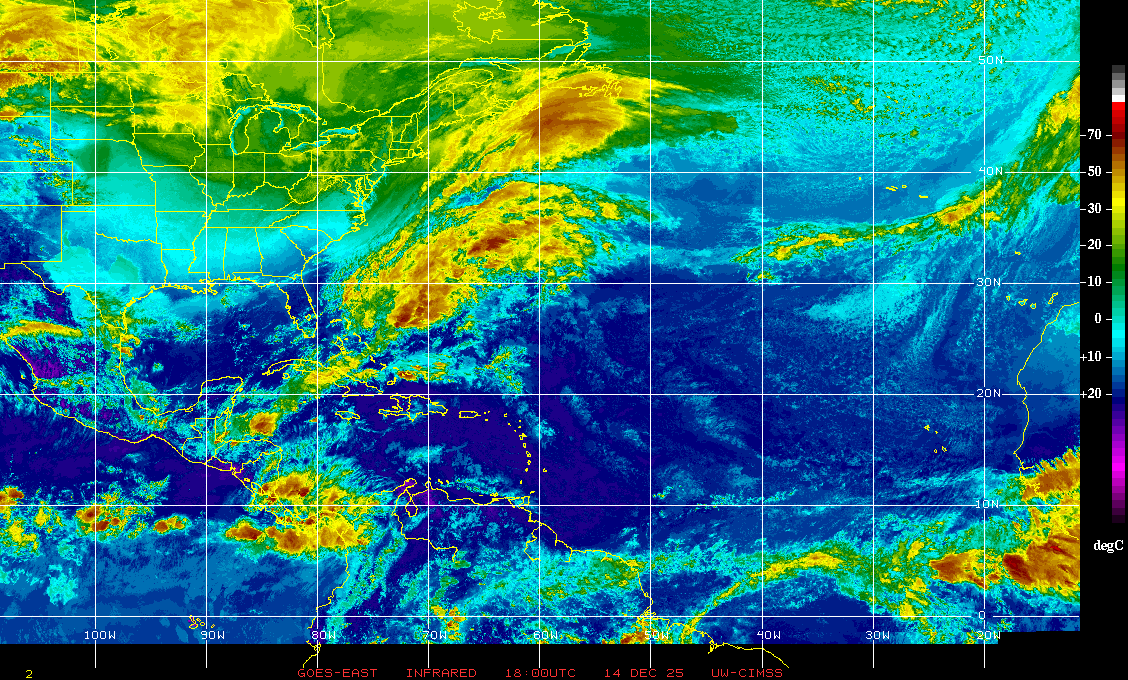Jacksonville, Fl. — The “Buresh Bottom Line”: Always be prepared!.....First Alert Hurricane Survival Guide... City of Jacksonville Preparedness Guide... Georgia Hurricane Guide.
STAY INFORMED: Get the * FREE * First Alert Weather app
FREE NEWS UPDATES, ALERTS: Action News Jax app for Apple | For Android
WATCH “Talking & Tracking the Tropics: The Science Behind the Season”
WATCH “Preparing for the Storm”
READ the First Alert Hurricane Center “Survival Guide”
***** ALWAYS CHECK & RE-CHECK THE LATEST FORECAST & UPDATES! *****
*** Low pressure/tropical wave ’92-L’/‘Potential Cyclone Nine’ was upgraded to tropical storm Isaias Wed. evening while over the Eastern Caribbean.... moved over Eastern Dominican Republic Thu. afternoon then offshore & quickly reorganized becoming the 2nd hurricane of the Atlantic season a little before midnight. Isaias is the 5th July named storm over the Atlantic which ties the record for the month set in 2005. It marks the fastest to ‘I’ beating the previous record set by “Irene” in - when else - 2005.
LOCAL JACKSONVILLE/NE Fl./SE Ga.:
Indications are that Isaias will now steadily strengthen through at least Fri. night while moving northwest then more northward potentially staying or just glancing the southeast coast of Florida Sat. followed by a track anywhere from ~80 - 130 miles - at least - east of NE Fl./SE Ga. with closest approach late Sunday into early Mon. On this track, impacts locally - which *do not* appear sever - for Jax/NE Fl./SE Ga - subject to change!:
-- bands of heavy rain north & northwest of the center Sunday/Sunday night. Amounts ranging from 1-2″, locally more near the coast to a half inch or less west of I-95
-- a dangerous rip current risk at area beaches with rough seas & surf. The best advice is to stay out of the ocean over the weekend... ships & boats should stay in port.
-- an isolated waterspout or two Sunday/Sun. night.
-- breezy winds of 15-25 mph, gusts 30+ mph at the beaches... 10-20 mph along I-95... much lighter inland west of I-95
-- overall - as long as the forecast track is accurate - impacts to NE Fl./SE Ga. should be minor & most significant at area beaches. Electrical & business infrastructure should stay intact & operational through & after the closest passage of Isaias.
Isaias remained quite well organized while traversing the rugged terrain of the Dominican Republic missing some of the highest mountainous peaks. Moving at more than 20 mph, Isaias did not stay over land for much more than 8-10 hours.
The somewhat loosely organized center has been jumping around as it tries to become consistently couched under the stronger convection. Hurricane hunter aircraft about 11:30pm Thu. found a small area of hurricane force winds northeast of the center, so the NHC pulled the trigger on an upgrade. Isaias should slow as it nears the edge of the upper level ridge through Fri., & we *should* see more of a turn northwest.
Forecast models have generally started to converge on a solution that takes Isaias to the SW Atlantic & Bahamas then a little east of Fl. - but very close to Ft. Lauderdale/Palm Beach Sat. - to very near the Carolina’s late Monday then to near New England midweek. The expectation is for environmental conditions do be favorable enough for Isaias to maintain hurricane strength thanks to warm sea surface temps., proximity to the very warm Gulf stream & possibly some upper level help from an approaching trough.
Overall forecast models recently have generally trended north & east & still insist on the northward move which is more realistic now that there is a center & the system - as a whole - is “deeper”, better organized. There is a good deal of shear (8th image below) in the vicinity of Isaias - on the order of 25-30+ mph - but the shear decreases the more north & west it goes (until shear increases some closer to Florida due to an approaching upper level trough). There is also some dry air (7th image below) that may occasionally infiltrate the system.
There is an alleyway of sorts developing near the U.S. east coast/far W. Atlantic. A more organized Isaias seems to now be sniffing out that alley lending confidence to the more north & east solution in the long run. The approaching upper level trough moving into the Eastern U.S. should help eventually steer Isaias north then northeast. The trough may help with the upper level ventilation of the storm negating some of the effects of potential low level shear while along or near the east coast & Isaias may undergo a period of fairly “solid” intensification through the weekend/early next week as indicated by some models..... &, therefore, be even stronger - at times - than a Cat. 1 hurricane. However, there may also be some land interaction - especially on the west side of the circulation - over the weekend during the close approach to SE Florida. The GFS model has recently come in stronger as has the operational European & UKMET models & generally agree on a painfully close approach to SE Fl. while turning north then well east of Jacksonville. The GFS remains decidedly faster (by 12+ hours) than either the European or UKMET models. A compromise between all three is the prudent route at this juncture & probably will end up closest to reality.






Current shear:
Dry air:

As for rainfall... there is the potential for some pretty decent banding of rain north & northwest of the center as “Isaias” approaches NE Fl./SE Ga. The combination of strong onshore flow (winds out of the east), surface convergence & friction should develop enough banding to produce as much as 1-2″+ of rain close to the coast. These bands will be capable of producing wind gusts of 30+ mph as well as isolated waterspouts with most of the rain falling between noon Sunday & noon Monday.





A couple of pretty active tropical waves are over the Central & Eastern Atlantic. A wave at 40-50 degrees West has some long term potential while it moves west/northwest.

Atlantic dust continues to spill west off of the Saharan desert over the E. Atlantic. Tropical waves continue to “fester” along the south edge of the dust & have the potential to thrive once away from the dust.

2020 names..... “Josephine” is next on the Atlantic list (names are picked at random by the World Meteorological Organization... repeat every 6 years... historic storms are retired (Florence & Michael last year) & Dorian is certain to be retired from the ’19 list....


East Atlantic:






Mid & upper level wind shear (enemy of tropical cyclones) analysis (CIMMS). The red lines indicate strong shear:
Water vapor imagery (dark blue indicates dry air):

Deep oceanic heat content is extreme over the NW Caribbean:

Sea surface temp. anomalies:


SE U.S. surface map:

Surface analysis centered on the tropical Atlantic:

Surface analysis of the Gulf:

Caribbean:

Global tropical activity:
Cox Media Group













